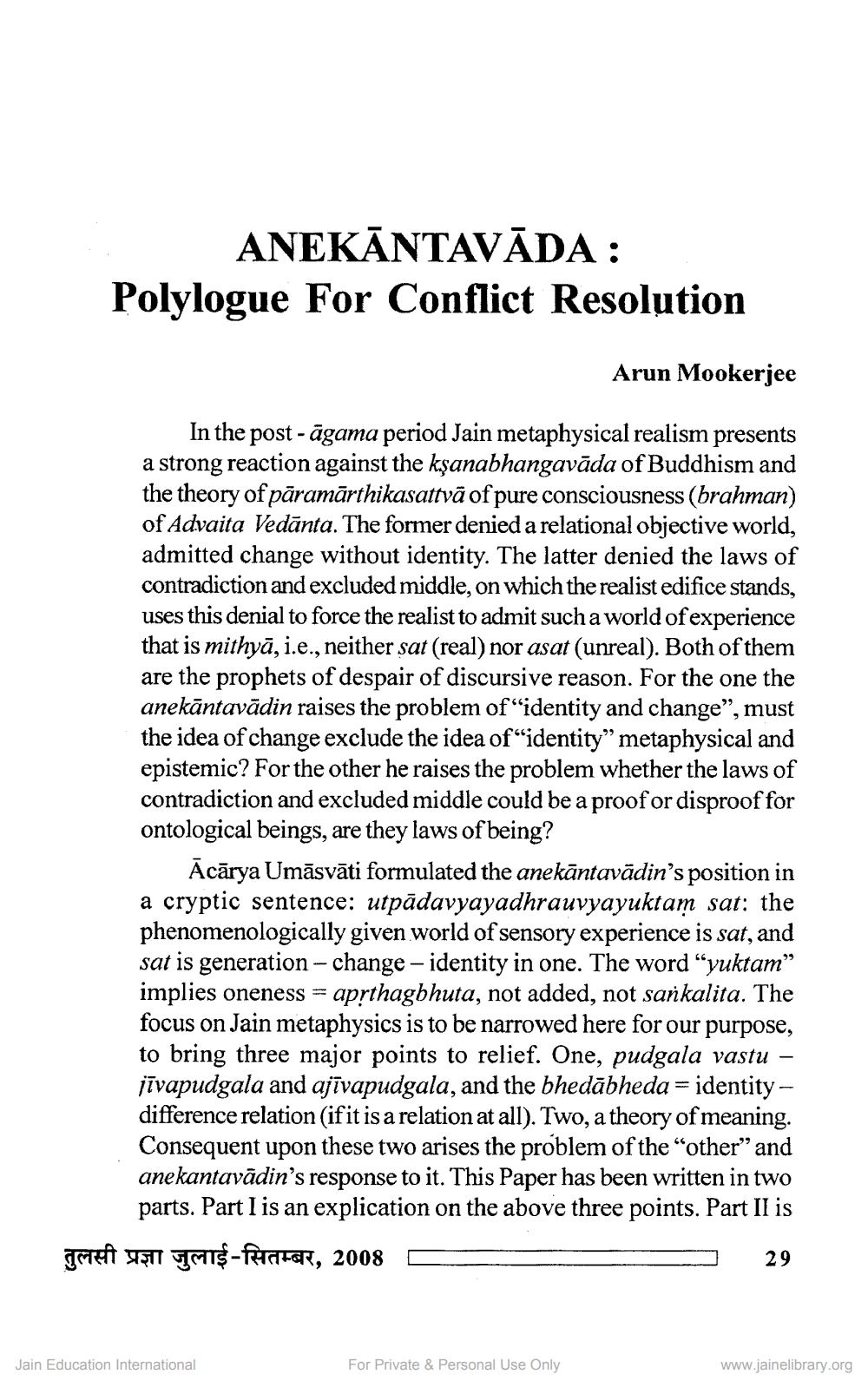________________
ANEKĀNTAVĀDA : Polylogue For Conflict Resolution
Arun Mookerjee
In the post - āgama period Jain metaphysical realism presents a strong reaction against the kşanabhangavāda of Buddhism and the theory of pāramārthikasattvā of pure consciousness (brahman) of Advaita Vedānta. The former denied a relational objective world, admitted change without identity. The latter denied the laws of contradiction and excluded middle, on which the realist edifice stands, uses this denial to force the realist to admit such a world of experience that is mithyā, i.e., neither sat (real) nor asat (unreal). Both of them are the prophets of despair of discursive reason. For the one the anekāntavādin raises the problem of identity and change", must the idea of change exclude the idea of “identity” metaphysical and epistemic? For the other he raises the problem whether the laws of contradiction and excluded middle could be a proof or disproof for ontological beings, are they laws of being?
Ācārya Umāsvāti formulated the anekāntavādin's position in a cryptic sentence: utpādavyayadhrauvyayuktam sat: the phenomenologically given world of sensory experience is sat, and sat is generation - change - identity in one. The word "yuktam" implies oneness = aprthagbhuta, not added, not sankalita. The focus on Jain metaphysics is to be narrowed here for our purpose, to bring three major points to relief. One, pudgala vastu – jīvapudgala and ajīvapudgala, and the bhedābheda= identity - difference relation (ifit is a relation at all). Two, a theory of meaning. Consequent upon these two arises the problem of the “other” and anekantavādin's response to it. This paper has been written in two parts. Part I is an explication on the above three points. Part II is 1 TIMIS- F ara, 2008
29
greit
Jain Education International
For Private & Personal Use Only
www.jainelibrary.org




